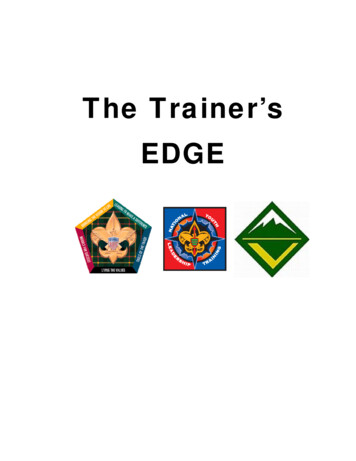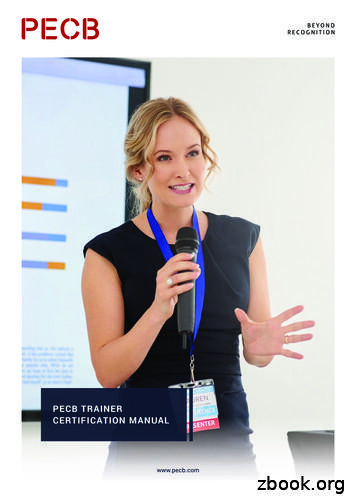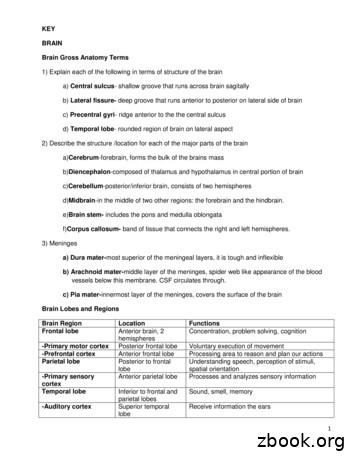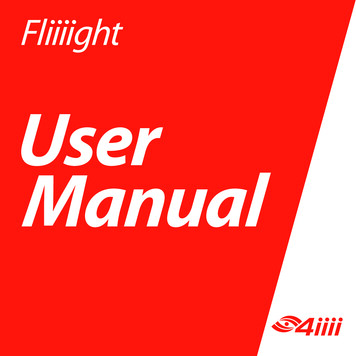Musical Brain Trainer
earwormsmbt Musical Brain TrainerRapidTurkish200 essential words and phrasesanchored into your long-term memorywith great musicYour personal audio language trainer
Your personal audio language trainer
earworms mbt Turkish puts the words and phrases youneed not just on the tip of your tongue, but also transportsthem deep into your long-term memory.Simply by listening to these specially composed melodieswith their rhythmic repetitions of Turkish and English a fewtimes, the sound patterns are indelibly burned into yourauditory cortex. You will have successfully learned theTurkish phrase and have the correct accent ringing in yourears. Wherever you are, whatever you are doing: whilejogging, in the car, in the bath, doing the ironing you canbe learning Turkish at the same time!earworms mbt Rapid Languages is the first languagecourse to get your toe tapping.You know the phenomenon of those catchy tunes orearworms that you just can't get out of your head?Voulez-vous coucher avec moi, ce soir? Well, earwormsmbt has put this phenomenon to positive use. Gone arethe days of learning pressure and frustration at not beingable to remember, the experience of many on conventionallanguage courses. In combination with music, thephrases you need are automatically anchored deep intoyour memory, ready for instant recall.Music is the keyThe idea is as simple as it is old. Before the age of writing,ancient historical events were recorded in verse and songform for easy memorisation. In his book 'Songlines'Bruce Chatwin describes how the Australian Aborigineswere able to navigate their way across hundreds of milesof desert to their ancestral hunting grounds without maps.And how? The extensive lyrics of their traditional songswere exact descriptions of the routes!
Rhythm and words i.e. song and verse have always beena very powerful memory aid, and this is supported byrecent scientific research. The advertising industry knowsonly too well how powerful music can be in gettingthe message across with brainwashing-like jingles andsoundbites.It really works!Developed and used over years in the classroom,earworms mbt Rapid Languages has shownphenomenal success. In tests pupils using this techniqueregularly get average marks of over 90% compared toless than 50% with conventional book based learning.Why hasn't music been used more in education up tonow? Imagine kids at school getting a CD of hip hopsongs with all the historical dates they have to learn,or all the irregular verbs they have to learn! Wouldn't thatmake their (and teachers') school lives much easier, muchmore fun, much more successful?What you getThis volume deals with the essentials for your visit abroad.It looks at typical situations: taking a taxi, at the hotel, atthe restaurant, requesting, polite phrases, finding yourway, numbers, dealing with problems and so on.Volume 2 will have you talking about yourself and others,past, present and future, likes and dislikes and generalconversational items. The themes follow closely theCommon European Framework for language learning, arecognised benchmark of language proficiency, and theemphasis is constantly on usefulness to the learner.
How to use earworms: Don't think, just listen!Sit back, relax and groove along to the melodies withouttrying to listen too hard. Treat them as songs you hear onthe radio. Our recommendation is that you do familiariseyourself with the written words in the booklet, at leastthe first time you listen.After listening several times, playfully test yourself cover up the English side of the phrase book and seehow many words and phrases you remember!Lastly - a word of thanksThe earworms team would like to thank you for puttingyour trust in our 'slightly different' learning conceptand are sure that you will have the success that manyothers have already had. It's motivating to know thatlearners are really benefiting from our research anddevelopment. Also, as accelerated learning is a rapidlygrowing field, we look forward to hearing yourexperiences and successes - so feel free to visit uson the website:www.earwormslearning.com
1. I would like I’d like a coffee.(lit.: I one coffee would like.)Ben bir kahve istiyorum.Please, a coffee Lütfen, bir kahve with milk. süt-lü*.milksütA coffee with milk.Süt-lü kahve.a teabir çayA tea, please.Bir çay, lütfen.with lemonlimon-lulemonlimontea with lemonlimon-lu çayand sugarve şekerandveVery good!Çok iyi! (pronunciation: choc)I thank you.Teşekkür ederim.a beerbir birawatersua bottle of water(lit.: one bottle water)a bottle of winebir şişe suPlease, bring a bottle of water.(lit.: Please, a bottle water bring.)bringLütfen, bir şişe su getirin.bir şise şarap (sounds like: Shut-up!)getirin*Many words are strung together in Turkish. E.g. ‘süt-lü’ (with milk) is correctly written:sütlü. Throughout the text we have divided words (and logical parts of words whereappropriate), with hyphens to make them easier to understand for the uninitiated.earwormsmbt Musical Brain Trainer
2. To eat, to drinksomething to eatbir şey yemekExcuse me, Affedersiniz, I’d like something to eat.(lit.: something to eat I’d like.) I’d like something to drink.(lit.: something to drink I’d like.)to drink bir şey yemek istiyor-um*.What would you like to drink?(lit.: What to drink would you like?)A glass of wine, please.Ne içmek ister-siniz**?glassbardakred winekırmızı şarapwhite winebeyaz şarapWhat would you like to eat?(lit.: What to eat would you like?)Ne yemek ister-siniz**?A kebab and salad, please.Bir kebab ve salata, lütfen.soupçorbaAnd also Ve de some bread. biraz ekmek. some olives. biraz zeytin.And also some olives.Ve de biraz zeytin.Bon appetit!Afiyet olsun!Thanks.Teşekkürler.Many thanks.Çok teşekkürler. bir şey içmek istiyor-um*.içmekBir bardak şarap, lütfen.* istiyor-um: ‘um’ at the end means ‘I’.** ister-siniz: ‘siniz’ at the end means ‘you’.Read the original text to give yourself extra visual input.To perfect your pronunciation let your ears guide you!
3. Have you got ?Have you got a table?(lit.: Table-yours is there?)*Table-yours Masa-niz var mı?Masa-niz have you got ? var mı?(lit.: is there?)Have you a table for two persons?Iki kişi-lik masa-nız var mı?(lit.: Two persons-for table have you got?)twoikifor two persons(lit.: two persons-for)for three personsiki kişi-likHave you a table for three (persons)?Üç kişi-lik masa-nız var mı?Yes, we have.(lit.: Yes, there is.)No, sorry (unfortunately) Evet, var. we don’t have a table.(lit.: table-ours there isn’t.) masa-mız yok.There is / There isn’t / Is there ?Var / Yok / Var mı ?The menu, please.Menü kartı, lütfen.Yes, of course.Evet, tabii.Everything Ok?Herşey tamam mı?Yes, everything is very good, thanks.Evet, herşey çok iyi, tesekkürler.Anything else?(lit.: Anything more?)No, thank you.Bir şey daha?The bill, please.Hesap, lütfen.üç kişi-likHayır, maalesef Hayır, teşekkür ederim.* There is no direct translation of ‘to have’ in Turkish. ‘Have you got a table?’ isexpressed as ‘A table of yours is there?’earwormsmbt Musical Brain Trainer
4. Taxi!If you want to ask the taxi driver how much the fare is before startingyour journey, here’s how to do it:Taxi!Taksi!To the city centre.(lit.: City centre to.)I want to go to the city centre.(lit.: To the city center go I want.)airport(lit.: air field)airŞehir merkezi-ne*.To the airport.(lit.: Airport to.)To the airport how much is it?(lit.: To the airport how much?)Hava-alanı-na*. how much? ne kadar? (or: kaça?)20 lira.Yirmi lira.OK, very well.Tamam, peki.To this hotel. / this hotelBu otel-e*. / bu otelI want to go to this hotel.(lit.: This hotel-to go I want to.)To this museum. / this museumBu otel-e gitmek istiyorum.Şehir merkezi-ne gitmek istiyorum.hava-alanıhavaHava-alanı-na ne kadar?Bu müze-ye*. / bu müzeI want to go to this museum.Bu müze-ye gitmek istiyorum.(lit.: This museum-to go I want to.)the bazaar (the market) / To the bazaar. pazar / Pazar-a*.I want to go to the bazaar.Pazar-a gitmek istiyorum.Here you are.Buyurun.It’s OK, keep the change.(lit.: It’s OK, the rest keep.)Tamam, üstü kalsın.* ‘ne’, ‘na’, ‘ye’, ‘e’ and ‘a’ all mean ‘to’. They mutate depending on the soundof the preceding noun and add an ‘n’ or ‘y’ to make them easier to pronounce.There are rules about these ‘mutations’, but for now we’ll just accept them.
5. Numbers, days & z18onsekiz9dokuz19ondokuz10on20yirmiAt what time?5 o'clock (lit.: hour 5)saat beş6 o’clocksaat altıat 6 o’clocksaat altı-dao’clock 7saat yediat 7 o’clocksaat yedi-deo’clock 8saat sekizat o’clock 8saat sekiz-deo'clock 11saat onbirhalfbuçukhalf past 7 (lit.: 7 half)yedi buçukhalf past 8 (lit.: 8 half)sekiz buçukearwormsmbt Musical Brain Trainer
The days (günler)daygünSunday(lit.: market)Monday(lit.: market eashing the brain’s potentialLearning to music is not only relaxing and enjoyable, it is also highly effective.Recent research accounts for this in two main ways.Firstly, music primes the neural networks and puts the learner into the optimumstate of consciousness for learning, the so-called Alpha state; relaxed but atthe same time receptive.Also, music engages and stimulates both the right and left hemispheres of thebrain, allowing ‘whole brain learning’ processes. Traditional teaching practicehas tended to favour the left hemisphere of the brain which is more concernedwith logic, mathematical thinking, reading and the rules of grammar –discounting the value of the senses and emotions in the learning process.By tapping into the auditory cortex, the area responsible for processingand storing sound waves, and to some extent evoking an emotional responsethrough music and dialogue, earworms engages the right hemisphere,unleashing more learning potential.
6. Is there ?Excuse me.Affedersiniz.Is there a bank near here?(lit.: Nearby a bank is there?)nearbyYakında bir banka var mı?Is there a bank here?(lit.: Here a bank is there?)hereBurada bir banka var mı?a supermarketbir süpermarketa post officeATM / cash machinepostane / postahane(Can be spelled both ways.)bankamatikNearby a cash machine is there?Yakında bir bankamatik var mı?Where is the nearest cash machine?(lit.: The nearest cash machine is where?)The nearest En yakın bankamatik nerede?Where is the nearest ?(lit.: The nearest is where?)The nearest doctor’s is where?En yakın nerede?The nearest hospital is where?En yakin hastahane nerede?The nearest pharmacy is where?En yakin eczane nerede?Where is the nearest internet cafe?En yakin internet cafe nerede?I’m sorry, I don’t know.Özür dilerim, bilmiyorum.*yakındaburadaEn yakın En yakin doktor nerede?* ‘bilmiyorum’ looks and sounds like one word but there are actually 4 parts to it:bil-m-iyor-um1. bil from bilmek ‘to know’2. m ‘not’ or ‘don’t’3. iyor signifies ‘now’ present, not past4. um ‘I’earwormsmbt Musical Brain Trainer
How often do I have to listen to the earworms CDbefore I can really remember all the language on it?With the appeal of the earworms songs we hopethat it is not a question of 'having to', it is rathera question of 'wanting to'. But seriously: thememory is like a muscle, it needs to be trainedand exercised. Based on scientific studies, theideal is listening relatively intensively at thebeginning (the learning phase), thereafterlistening periodically to review what youhave learnt and refresh your memory.In practical terms this means listening tothe whole album the first day, in order to'tune your ear in' to the sounds of thelanguage. Then listen regularly, severaltimes, over a period of one or two weeks,making sure that you listen to every songequally as many times. While listening,actually speak the words out loud, whenyou can, to get a feeling for their pronunciation. After this, go through the bookletand test your knowledge, picking out anygaps that you may wish to concentrate on.Lastly, the review phase. As we all know,memories fade, so it is important to refreshyour memory by listening to the CD at yourleisure, say, once a week for the followingfew weeks. Thereafter, monthly.This review phase is crucial as it consolidatesyour knowledge and transfers it into yourlong-term memory. Although this demandsself-discipline, it is of course without effort,as you are only listening to songs.The result is that you will be able to recall thewords and phrases with the same ease thatyou remember your telephone number!
7. DirectionsI’m looking for the station.(lit.: Station looking for I’m.)Excuse me, where is the Ankara train?(lit.: Excuse me, Ankara train where?)Istasyonu ar-ıyor-um.The bus stop is where?Otobüs durağı nerede?Excuse me, how do I get to the market?(lit.: Excuse me, market-to how to go?)Affedersiniz, pazar-a nasıl gidilir? how to get to? nasıl gidilir?bus / by busotobüs / otobüs-lecar / by cararaba / araba-y-la*by le or latrain / by traintren / tren-letaxi / by taxitaksi / taksi-y-leunderground / by undergroundmetro / metro-y-latram / by tramtramvay / tramvay-laon foot / walkingyürüyerekGo straight along this street.(lit.: This street straight go.)Bu sokaktan düz gidin.Then turn right. / Then turn left.Sonra sağa dön. / Sonra sola dön.Is it far?(lit.: That place far-question?)Orası uzak-mi?faruzakNo, no, not far, it’s near.(lit.: No, no, far not, near.)notYok, yok, uzak değil, yakın.About 1 km.Yaklaşık bir kilometre.Go by bus!(lit.: By bus go!)Otobüs-le gidin!Super! Thanks.Süper! Teşekkürler.Affedersiniz, Ankara treni nerede?değil* In ‘araba-y-la’, the ‘y’ is just a joining letter to help the flow of words ‘araba’ and ‘la’.earwormsmbt Musical Brain Trainer
8. Where & what time?Hello. Welcome.(lit.: Well-come-you.)Have you a room?(lit.: Room-yours is there?)For two nights?(lit.: Two nights-for?)Merhaba. Hoş-geldi-niz.For two people.İki kişi-lik.Yes, we have a room.(lit.: Yes, a room-ours there is.)How much is the room?(lit.: The room how much?)120 lira.Evet, bir oda-mız var.Is breakfast included?Kahvaltı dahil mi?With a bath?(lit.: Bath with?)Yes, with a bath.Banyo-lu mu?Where is the toilet?(lit.: Toilet where?)Over there.Tuvalet nerede?Where is your case?(lit.: Case-yours is where?)My case is here.Valiz-iniz nerede?Our case is there.(lit.: Case-ours is there.)Valiz-imiz şurada.here / thereburada / şuradaWhere is our room?Oda-mız nerede?On the 1st floor.(lit.: 1st floor on.)On the 2nd floor.Bir-inci kat-ta.What time is breakfast?(lit.: Breakfast what time?)From seven until ten.(lit.: 7-from, 10-until.)Kahvaltı saat kaçda?from until -den, -kadarOda-nız var mı?İki gece-lik?Oda kaςa?Yüz-yirmi lira.Evet, banyo-lu.Şurada.Valiz-im burada.İk-inci kat-ta.yedi-den, ona-kadar
9. Problems, problems!In the room there is a problem.(lit.: Room-in a problem there is.)with the TV / with the showerOda-da bir problem var.With the water there is a problem.Su-y-la* bir problem var.There isn’t any water.(lit.: Water there isn’t.)There isn’t any warm water.(lit.: Warm water there isn’t.)There isn’t any electricity.(lit.: Electricity there isn’t.)there is / there isn’tSu yok.I have lost my key.(lit.: My key I have lost.)I have lost my camera.(lit.: My camera I have lost.)I have lost my passport.(lit.: My passport I have lost.)I have lost my wallet.(lit.: My wallet I have lost.)Can you help me?(lit.: Me help can-question-you?)Me help Anahtarı-mı kaybett-im. can you? olabilir-mi* *-siniz?My stomach is hurting.Karn-ım ağrıyor.I should go to a doctor.(lit.: Doctor-to go should I.)You should go to a doctor.(lit.: Doctor-to go should you.)Do you have medicine for headache?(lit.: Head ache for medicine do you have?)Do you have Aspirin?Doktor-a git-meli-y-im*.Yes, I have Aspirin.Evet, Aspirin var.televizyon-la / duş-laSıcak su yok.Elektrik yok.var / yokFotoğraf makina-mı kaybett-im.Pasaportu-mu kaybett-im.Cüzdanı-mı kaybett-im.Bana yardımcı olabilir-mi**-siniz?Bana yardımcı Doktor-a git-meli-sin.Baş ağrısı için ilaç var mı?Aspirin var mı?* In ‘Su-y-la’, the ‘y’ is just a joining letter to help the flow of words ‘Su’ and ‘la’.The same goes for ‘meli-y-im’.** mi is the question word.earwormsmbt Musical Brain Trainer
10. Do you speak English?Morning.Günaydın.Good afternoon. / Good day.(lit.: Good days.)İyi günler.How are you?Nasıl-sınız? (formal)Nasıl-sın? (informal – to friends)Teşekkürler, iyi-y-im*.Thanks, good I am.Do you speak English?(lit.: English know you?)Do you speak Turkish?İngilizce bil-iyor mu-sunuz?Sorry, I don’t speak Turkish.(lit.: Sorry, Turkish know not I.)I know/speak some Turkish.(lit.: Some Turkish know I.)I don’t understand.(lit.: Understand not I.)I understand.Maalesef, Türkçe bil-m-iyor-um.Türkçe bil-iyor mu-sunuz?Biraz Türkçe bil-iyor-um.Anla-m-ıyor-um.Anl-ıyor-um.Please, speak more slowly.(lit.: More slowly speak, please.)It’s not easy. / Easy. / Turkish isn’t easy.(lit.: Easy not. / Easy. / Turkish easy isn’t.)What is your name?(lit.: Name of-yours what?)My name is Daha yavaş konuş, lütfen.Do you like Turkey?(lit.: Turkey do you like?)Do you like the tea?Türkiye’yi beğendin-mi?Yes, I like it very nice.Evet, beğend-im çok güzel.See you.Görüşmek üzere.See you tomorrow.(lit.: Tomorrow see you.)Good bye!Yarın görüşmek üzere.Bye bye!(lit.: Smile, smile!)kissGüle güle! (Person who stays says)Kolay değil. / Kolay. / Türkçe kolay değil.Adı-nız ne?Ben-im adım Çayı beğendin-mi?Hoşça kal! (Person who leaves says)öpücük (Practice your pronunciation!)* In ‘iyi-y-im’, the ‘y’ is a joining letter to help the flow of words.
The science behind earworms mbt 1. How we learnA large part of learning in general and languagelearning in particular is to do with the memorisationof words, facts and other significant information. It'sa well-known fact that we use only a fraction of ourbrain power and traditional book learning is nowrecognised as not suiting every learner.earworms uses simple techniques which open upand exploit more of the brain's native power, andcome under the heading of 'accelerated learning'.Interestingly, researchers at Dartmouth College inthe US reported that they had pinpointed theregion of the brain where 'earworms' or catchytunes reside, the “auditory cortex”. They foundthat the sounds and words that have actuallybeen heard can be readily recalled from theauditory cortex where the brain can listen to them'virtually' again and again.2. What we learnearworms mbt adopts the so-called lexicalapproach to language. In essence, this means welook at language in terms of whole meaningfulchunks, then break these down into their componentbite-sized, easily absorbable parts and thenreconstruct them. You not only learn complete,immediately useful phrases, you also intuitivelylearn something about the structure (the grammar)of the language. These 'chunks' which the learnercan 'mix and match', gradually build up to coverwhole areas of the language.
Languages available:ArabicBrazilian PortugueseCantoneseMandarin olVolVolVolVolVolVolVolVol111111111111111 Vol 2 Vol 2 VolVolVolVolVolVolVol2222222 Vol 2 Vol 2 Vol 2To order any of the above and for further free languagelearning resources please visit the earworms website:www.earwormslearning.com
earwormsmbt Musical Brain TrainerThe Tracks:1.2.3.4.5.6.7.8.9.10.I would like 7:16To eat, to drink 5:51Have you got .? 6:36Taxi! 5:32Numbers, days & time 5:55Is there ? 6:02Directions 8:29Where & what time? 7:12Problems, problems! 7:59Do you speak English? 7:59Concept & Text: Marlon Lodge, Project Development: Andrew Lodge, Project Management:Maria Lodge, Music: earworms & AKM, Songs 1, 3, 5, 6, 8, 9 feature samples bywww.platinumloops.com, Turkish Text: Neslihan Özsenler, Ahter Oezker, Turkish Voice:Neslihan Özsenler, English Voice: Marlon Lodge, Graphic Design: Jaroslaw Suchorski @ HKP.Special Thanks to Jason Sparrow.www.earwormslearning.com 2011 Earworms Ltd.Catalogue no. EART1505ISBN 9781905443505
The extensive lyrics of their traditional songs . 5 o'clock (lit.: hour 5) 6 o’clock at 6 o’clock o’clock 7 at 7 o’clock o’clock 8 at o’clock 8 o'clock 11 half . Saturday Unleashing the brain’s potential Learning to music is not only
The Trainer’s EDGE Purpose of the Course The Trainer’s EDGE replaces the Trainer Development Conference (BSA 500) as the required train‐the‐ trainer course for Wood Badge and NYLT staffs. The purpose of the Trainer’s EDGE course is to provide and help d
PECB CERTIFIED TRAINER 2 4. Scroll down and click on Become a PECB Certified Trainer link 5. Fill in the Trainer Eligibility Form . In this section you will take the Trainer Quiz that is based on the PECB Trainer Presentation. Please be informed that you will have 3 attempts to pass the quiz. Choose one of the answers by checking the
1 KEY BRAIN Brain Gross Anatomy Terms 1) Explain each of the following in terms of structure of the brain a) Central sulcus- shallow groove that runs across brain sagitally b) Lateral fissure-deep groove that runs anterior to posterior on lateral side of brain c) Precentral gyri- ridge anterior to the the central sulcus d) Temporal lobe- rounded region of brain on lateral aspect
Sheep Brain Dissection Guide 4. Find the medulla (oblongata) which is an elongation below the pons. Among the cranial nerves, you should find the very large root of the trigeminal nerve. Pons Medulla Trigeminal Root 5. From the view below, find the IV ventricle and the cerebellum. Cerebellum IV VentricleFile Size: 751KBPage Count: 13Explore furtherSheep Brain Dissection with Labeled Imageswww.biologycorner.comsheep brain dissection questions Flashcards Quizletquizlet.comLab 27- Dissection of the Sheep Brain Flashcards Quizletquizlet.comSheep Brain Dissection Lab Sheet.docx - Sheep Brain .www.coursehero.comLab: sheep brain dissection Questions and Study Guide .quizlet.comRecommended to you b
I Can Read Your Mind 16 How the Brain Creates the World 16 Part I Seeing through the Brain's Illusions 19 1 Clues from a Damaged Brain 21 Sensing the Physical World 21 The Mind and the Brain 22 When the Brain Doesn't Know 24 When the Brain Knows, But Doesn't Tell 27 When the Brain Tells Lies 29 How Brain Activity Creates False Knowledge 31
Chapter 7 : The Musical Measuring Unit 7.1 The Egyptian Musical Complement 55 7.2 The Egyptian Musical Measuring Units 56 7.3 The Comma, Buk-nunu, and the Siamese Twins 59 7.4 The Comma and the Musical Instruments 60 55 PART IV : THE EGYPTIAN MUSICAL BUILDING CODE Chapter 8 : The Musical Framework Varieties 8.1 The Overall Tone System 65
The Human Trainer Manual - Sample Exercises The Human Trainer Full Body Express Workout The Human Trainer Pulley Workout The Human Trainer Stretching Workout Log 4 6 8 10 12 14 16 18 20 24 26 28 30 32 34 36 38 40 42
Dec 04, 2019 · 1.2 Trainer component diagram 2 2. Introduction to Smart Trainers 2.1 Compatible devices 3 2.2 Compatible apps 4 2.3 Smart trainer modes 5 3. Getting Started 3.1. Before installing the bike trainer 6 3.2. Installing the bike in the trainer: first time set-up 7 3.3. Activate the trainer 11 3.























